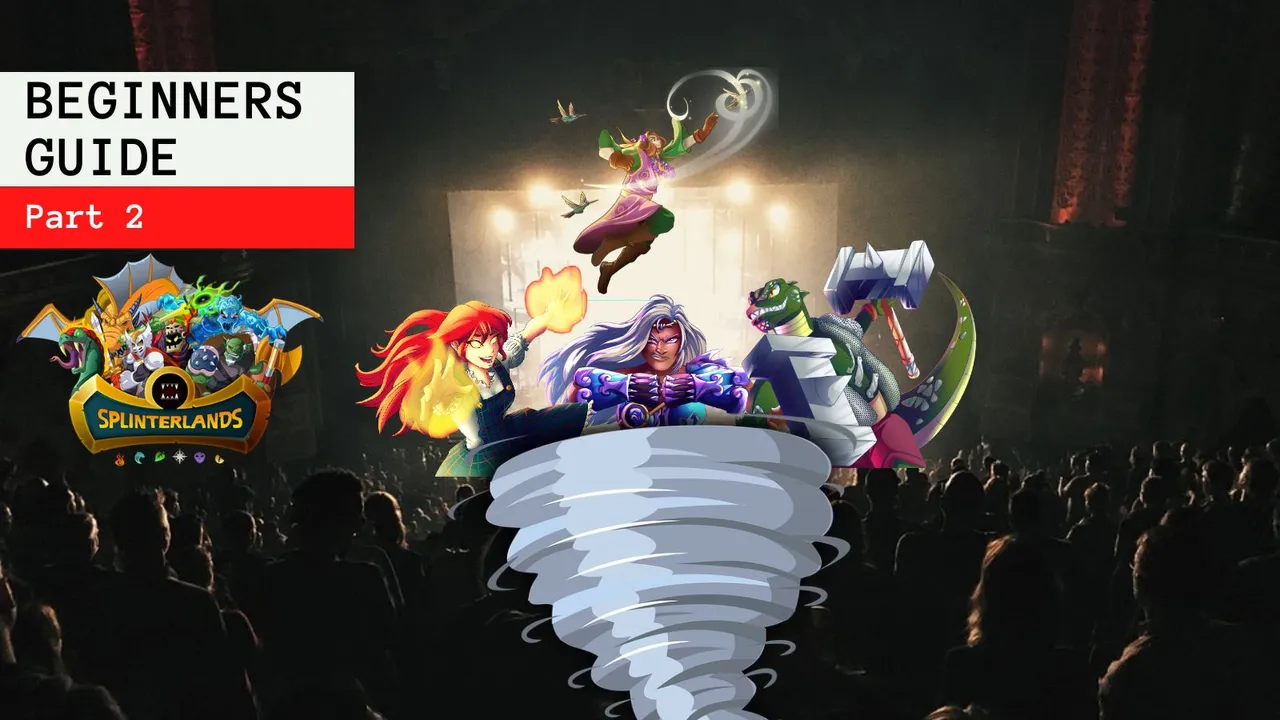
Welcome to part 2 of my Splinterlands beginners guide. Part 1 you can find here. Today we will go over some of the basics about the gameplay that you need to know to get started in Splinterlands. There are lots more to learn that this, but this is what I would want to know when getting started.
Splinterlands is also a very dynamic game that changes from season to season, and this is all part of keeping up with an online multi-player crypto play to earn game.
First of all, Splinterlands is what is known as an auto battler card game, in that you select the cards that you want to play, and then the battle runs and you get the result. This is different to other games that require you to make multiple back and forth moves like in chess until the game is over.
Once you are signed up, the first thing you will want to do is play the game and see how it is working. And this is possible to do because there are starter cards available so that you can play straight away. Here I will give you an overview of the gameplay and show you how it is working and what things are important to know at the beginning by running through a typical match.

When you first register for Splinterlands, there is quite a bit of information being displayed, but for the most part, at the beginning, most of it is not so important to start with. To actually play the game, you need to click on the battle button.
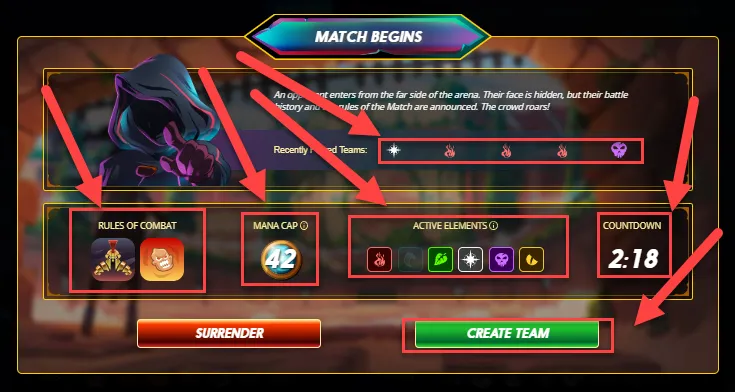
Next you will be brought up a new box with some important information to be aware of. From left to right, these are:
Rules of Combat - these are varying different rulesets that can apply to this match. A full list of the different rulesets are available here.. But in the beginning I wouldn't worry too much about learning them as you will soon pick up the rulesets by the choice of cards that are available for you to play.
Mana Cap - Each card has a mana score and for each match there is a total mana score that you need to keep within. Matches are known as low-mana, mid-mana or high mana battles and can affect the type of tactic that you might want to play.
Active Elements - A further element of the gameplay is that for each match, you can be restricted on which Splinter or sometimes called element that you can play. I will cover the different splinters in the next part, for now it is enough to know that sometimes you can only play certain splinters in matches.
Recently Played Teams - When you hover the mouse over the little icons, it gives you a small preview of your opponents previous lineups in their matches. This can be helpful to gauge 4 important things The first is what splinter your opponent likes to play the most, what is the relative strength of your opponent, do they have any special legendary summoners and what summoners they use the most recently. More on this in the next part of my guide.
Countdown - Here is to inform you that you have a time limit to select your team and the match will begin.
You need to click create team to start selecting your team.
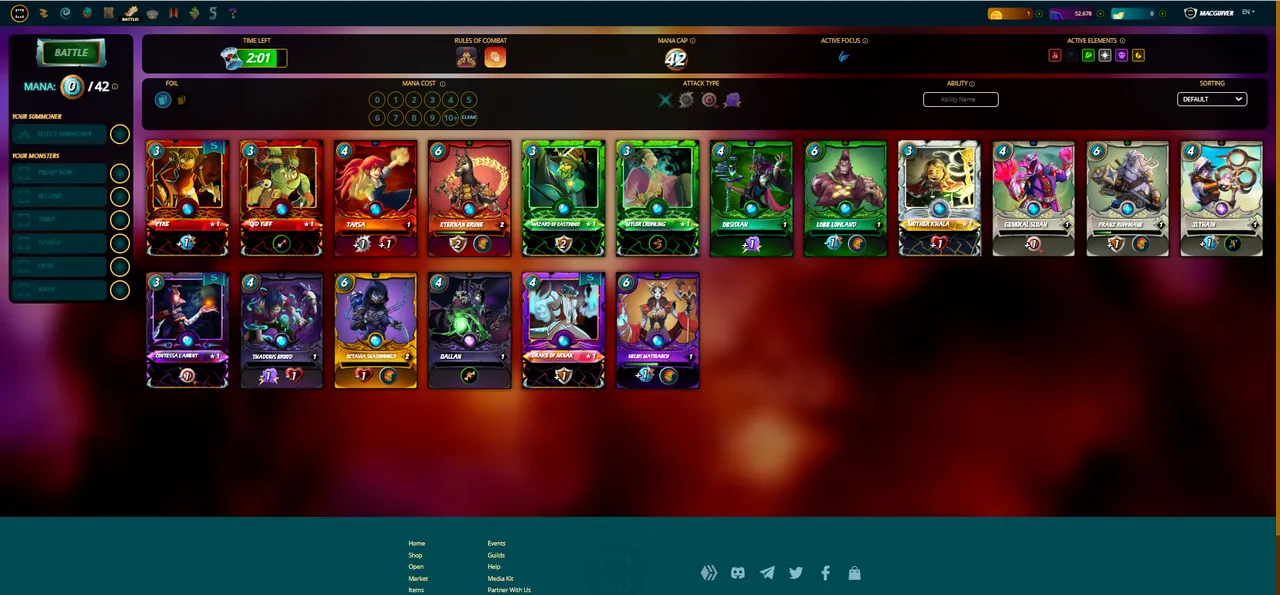
The next screen you will be faced with is the summoner selection screen. Each match requires to be lead by a lead card or what is called a summoner in Splinterlands. I will cover this in more detail in the next part but for the gameplay aspect, what is important to consider are 4 things:
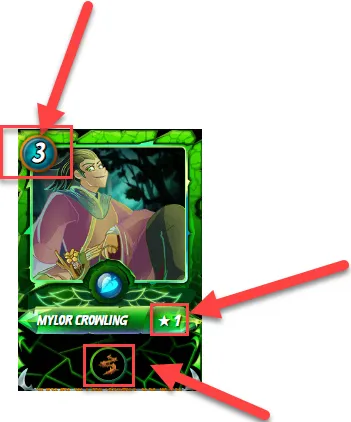
From left to right, the top left number is the mana score, next is the summoner level and then the special ability that the summoner bestows upon your team. Finally, the color of the card determines what splinter or element the summoner belongs to. Here it is green which represents the earth splinter.
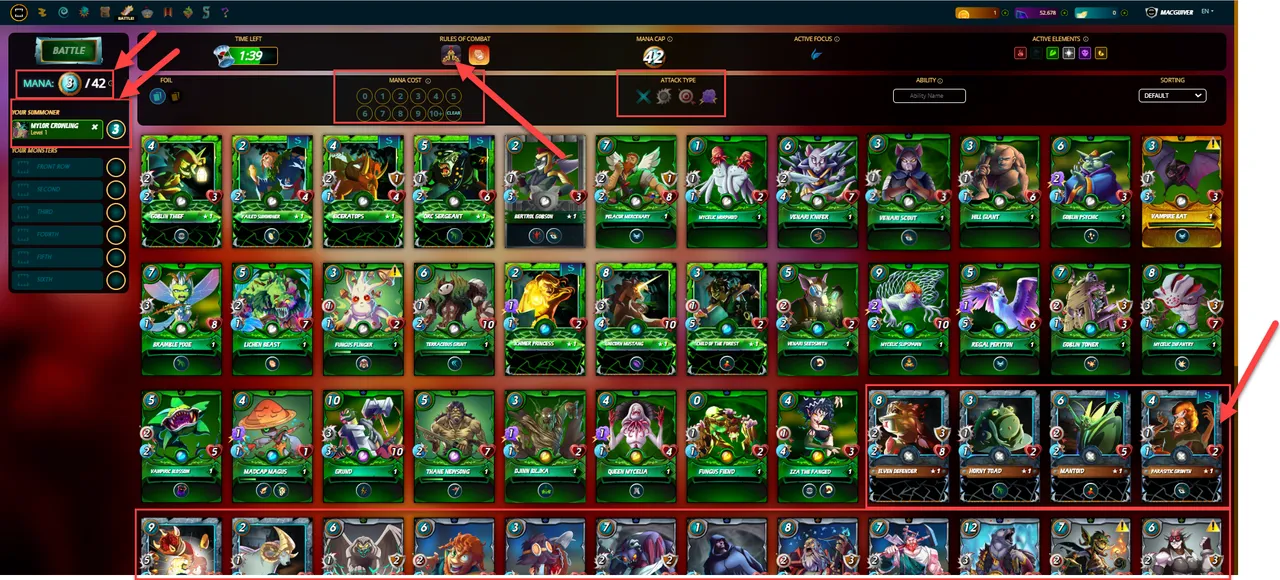
Once you have selected your summoner, you will see that he appears in the top left corner where your team selections will appear. Above this, you can see that his 3 mana score is taken from your 42 total mana available for choosing monsters. Important to know is that your summoner doesn't actually do battle, just the team you select.
Important things to consider here at the beginning are that you can filter the card selection with the 2 boxes that I have highlighted. The first is by mana cost and the second is by attack type. This brings me on to an important topic that will be covered in more detail next time, but there are 3 different attack types to choose from. Melee, Ranged and Magic. I wouldn't think too much about it just now, as this is an easy element that will come to you very quickly.
Next you will see that you have mostly just green cards to choose from as this is an earth splinter summoner that we have selected. If we had chosen a red summoner, the cards available would be red. At the bottom you can also see a selection of grey cards, these are neuteral monsters and can be used with all summoners.
One final thing that you can notice that I have highlighted in the middle, is that there is a very grey card, this is called a gladius card and is visible just because of the special ruleset here that allows you to use these special cards. At the beginning, I would not think about these cards as this is something to look at later in the game.
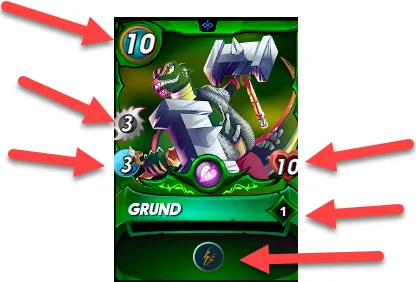
When selecting your team, the things to consider are highlighted above top to bottom:
Mana score - you have a mana limit for each match and can only select monsters within that range.
Attack type and strength. For each monster, there would be a symbol for either melee, ranged or magic attack with a number inside it. The symbol above represents melee attack and with a strength of 3.
Speed. Each monster has a speed and this is represented here. Faster monsters are better to attack and also for evading when they are attacked.
The red heart represents the health score of the monster. The higher is usually the better so that i can survive more attacks from your opponents.
Card level, this represents what level your monster is at, the higher number would represent and upgraded monster. I will cover this further in the next part.
Ability. This shows you what abilities the monster may have. In this case it is a double-strike ability and the monster can attack twice per turn.
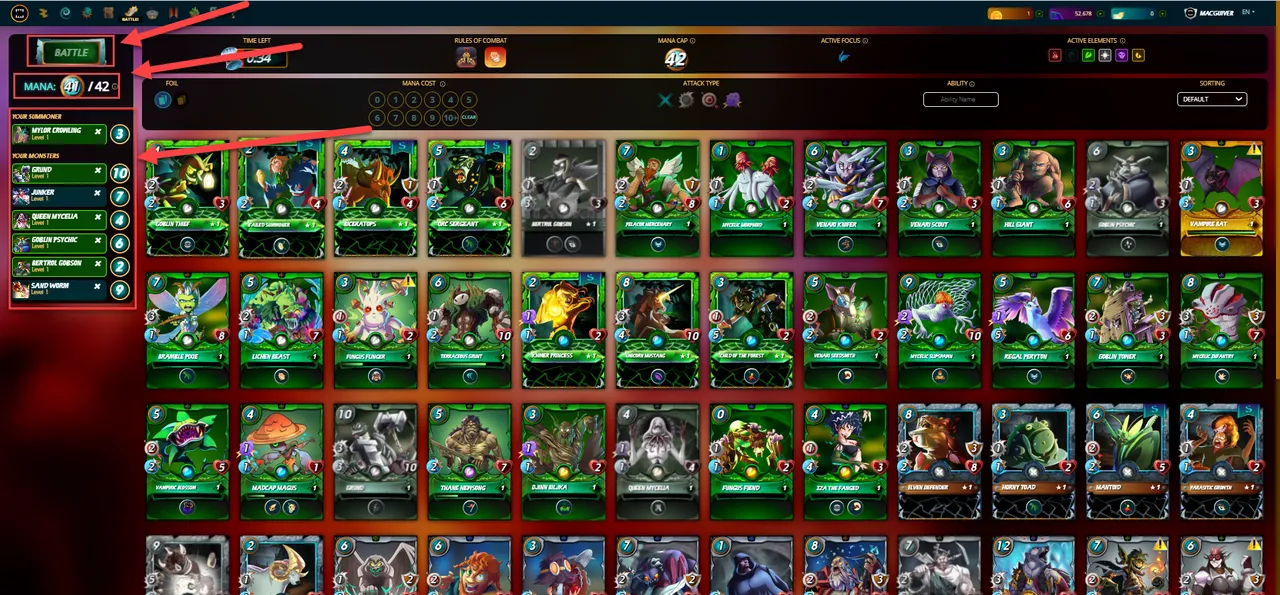
Once you have selected your monsters, they appear in the column shown on the right. Something to be aware when selecting your monsters is that the first monster you select is called the tank because it is the lead monster that attracts your enemy attack usually. Therefore, chosing a strong tank card to withstand attack is important. Usually a card with lots of health and shield is a good option.
Above the team selection, you can see that I have used 41 of the 42 mana available. Above that again, you can click the battle button to start the battle.
That is it, you have selected your team and then the game will auto-battle and you can watch the result.

To visualise, you can now see the card I selected is in the first position in what is called the tank position. He has the highest health of all my monsters. Just below him is the card in the second position and then finally you can see the card that is in the last position. This is important to know because you can get some cards that can support the tank from the 2nd position with the reach ability. There are also monsters that have a sneak ability that can attack your last position, so these are generally vulnerable parts in your line up.
OK, I hope that might help you play your first battle in Splinterlands knowing where and what to press. Next time I will cover the cards and NFT element in more detail.
If you have any questions, feel free to drop them in the comments below.

Credits:
The title image was created in Canva with images from Pexels/ Pixabay and Clker-Free-Vector-Images / Pixabay
Screenshots, logos and characters are taken from Splinterlands.

SignUp to Splinterlands:

Let's connect: mypathtofire
